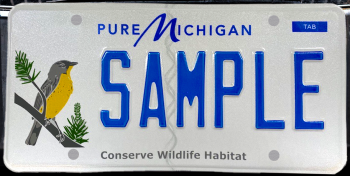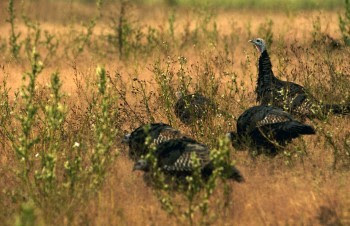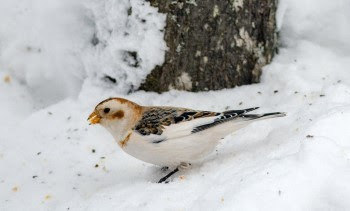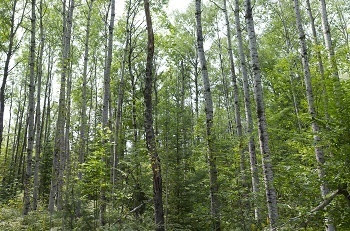| This week’s stories may reflect how the Department of Natural Resources has adapted to meet customer needs and protect public health and safety. Follow our COVID-19 response page for updates on access to facilities and programs.
We’ll continue to share news and information about the best ways to discover and enjoy Michigan’s natural and heritage resources! Here’s a look at some of this week’s stories:
See other news releases, Showcasing the DNR stories, photos and other resources at Michigan.gov/DNRPressRoom.
PHOTO FOLDER: Larger, higher-res versions of the images used below, and others, are available in this folder.
 Want to see more pictures like this, taken by Michigan state parks photo ambassador Joe Holley at the Ralph A. MacMullan Conference Center in Roscommon County? Visit Instagram.com/MiStateParks to explore photos and learn more about the photo ambassadors! For more on the photo ambassador program, call Stephanie Yancer at 989-274-6182. Want to see more pictures like this, taken by Michigan state parks photo ambassador Joe Holley at the Ralph A. MacMullan Conference Center in Roscommon County? Visit Instagram.com/MiStateParks to explore photos and learn more about the photo ambassadors! For more on the photo ambassador program, call Stephanie Yancer at 989-274-6182.
 Since December 2017, Michigan’s wildlife habitat license plate has featured an elk to mark the 2018 celebration of 100 years of elk in our state. Since December 2017, Michigan’s wildlife habitat license plate has featured an elk to mark the 2018 celebration of 100 years of elk in our state.
Beginning in January, the next species to adorn the plate is the Kirtland’s warbler – to celebrate the recovery of this unique bird.
In 2019, the Kirtland’s warbler was removed from the endangered species list. Ongoing efforts by the DNR and a multitude of partners have ensured nesting habitat is and will continue to be available for this songbird, which nests only in young jack pine stands in Michigan, Wisconsin and Ontario.
“The successful recovery of the Kirtland’s warbler is reason to celebrate,” said Jared Duquette, chief of the DNR Wildlife Division. “We hope highlighting the Kirtland’s warbler will encourage continued funding for conservation efforts of Michigan’s threatened and endangered species.”
All proceeds from the sale of the wildlife habitat license plate will continue to support the Nongame Fish and Wildlife Trust Fund and benefit nongame species like the warbler.
The loon was the first species featured on the license plate in 2006. Since then, the wildlife habitat license plate has raised over $3.9 million for the Nongame Fish and Wildlife Trust Fund.
Purchase the wildlife habitat license plate through the Secretary of State for $35, with $25 of that fee going to the Nongame Fish and Wildlife Trust Fund. Those interested in getting the elk plate before it’s gone have until the end of December 2021.
Questions? Contact Hannah Schauer at 517-388-9678. |
 Wild turkeys are a common sight across Michigan, but a century ago, none of these gobblers could be found anywhere in the state. Colonization, habitat destruction and unregulated hunting decimated Michigan’s wild turkey population by the turn of the 20th century. Wild turkeys are a common sight across Michigan, but a century ago, none of these gobblers could be found anywhere in the state. Colonization, habitat destruction and unregulated hunting decimated Michigan’s wild turkey population by the turn of the 20th century.
In the 1950s, the DNR purchased 50 wild turkeys from Pennsylvania to release into the open woodlands of Allegan County. Thirty years later, more wild turkeys from Missouri and Iowa were released across Michigan, further strengthening and diversifying the population. Thanks to collaborative conservation efforts over the last half-century, there are now 200,000 wild turkeys trotting across the state!
Conservation success stories like this are possible through years of strong partnerships and community support.
The National Wild Turkey Federation works with the DNR, private landowners and local NWTF chapters to restore and enhance habitat wild turkeys need to thrive. NWTF is also a MI Birds partner and has co-hosted immersive birding field trips at oak-savannah restoration sites, engaging the birding community in wild turkey conservation.
Wild turkeys rely year-round on open woodlands with interspersed clearings. Here in Michigan, they like openings in oak-hickory forests, with red oak, beech, cherry and white ash trees. These open woodland habitats also support some of our favorite songbirds, such as the blue-winged warbler and eastern towhee.
Here’s how you can help wild turkeys:
Questions? Contact the DNR Wildlife Division at 517-284-9453. |
 Temperatures are dropping and birdsong has all but disappeared, but not all Michigan birds fly south to warmer climates. In addition to the birds that stay year-round, Michigan welcomes many visitors from the north in the colder months, making winter an exciting time to watch birds. Temperatures are dropping and birdsong has all but disappeared, but not all Michigan birds fly south to warmer climates. In addition to the birds that stay year-round, Michigan welcomes many visitors from the north in the colder months, making winter an exciting time to watch birds.
Snow buntings, horned larks and dark-eyed juncos arrive this time of year, in addition to snowy owls, great gray owls and boreal owls that make their way into the Upper Peninsula and northern Lower Peninsula. Winter is also the perfect season for waterfowl birding as hundreds of thousands of ducks, geese and swans descend on the Great Lakes.
This winter, you can contribute to science while you’re birding! Winter bird counts help scientists better understand winter bird movements, assess bird population health and guide meaningful conservation action. With bird populations in decline, it is increasingly important that scientists and land managers understand all aspects of a bird’s life cycle.
Check out these upcoming community science opportunities hosted by MI Birds partners across the state, and find out how to get involved:
Audubon’s Christmas Bird Count (Dec. 14-Jan. 5): Audubon’s Christmas Bird Count is entering its 122nd year! Data submitted by volunteers helps scientists identify long-term population trends and movements for hundreds of bird species across North America. Visit Audubon’s interactive map to find contact information for a CBC coordinator near you.
Climate watch (Jan. 15-Feb. 15): This annual Audubon bird count explores how North American birds, like the eastern bluebird, are responding to climate change. The results from the survey will allow scientists to identify areas of high climatic suitability for target species and will inform on-the-ground land management decisions to protect birds. Learn how you can volunteer today.
The Great Backyard Bird Count (Feb. 18-21): This four-day event coordinated by Audubon and the Cornell Lab of Ornithology invites people from all over the world to record their bird observations for at least 15 minutes, in your own backyard or at public lands near you. All ages and birding levels are welcome, and you can participate in any or all the four days of this international birding event. Learn how you can participate.
To learn more about Michigan’s birds, visit MI Birds, your one-stop shop for all things birds in Michigan. |
 Leaves are down and temperatures are cooling — that means it’s time for pruning oak trees. These trees can be infected by oak wilt fungus if pruned during the high-risk period April 15-July 15. Leaves are down and temperatures are cooling — that means it’s time for pruning oak trees. These trees can be infected by oak wilt fungus if pruned during the high-risk period April 15-July 15.
“Beetles that can carry the disease from tree to tree are not very active now, and the trees are not vulnerable to infection,” said Simeon Wright, forest health specialist with the DNR Forest Resources Division. “The beetles are attracted to fresh bark damage or wounds where tree limbs have been removed.”
Oak wilt, identified in the 1940s, is widespread across Michigan’s Lower Peninsula and along the Wisconsin border in the Upper Peninsula. Red oaks are most susceptible and can die within weeks of infection. These trees have leaves with pointed tips and include black oak, northern red oak and northern pin oak. Trees in the white oak group (which have rounded leaf edges) are less susceptible. Affected trees will suddenly wilt from the top down, rapidly dropping leaves, which can be green, brown or a combination of both colors.
Oak wilt also spreads when firewood from infected trees is moved to new locations. If you cut wood from an oak tree that might have died from oak wilt, cover the wood with a plastic tarp and bury the tarp’s edges underground to prevent access by the beetles that spread the disease. Ensure the tarp remains intact for six to 12 months until the bark sloughs off. This will kill the fungus and prevent its spread to healthy trees.
Tree trimming around structures, limb removal and even construction or clearing that can result in damage to oak trees should be planned outside of the oak wilt susceptibility period.
Waiting for winter assures that trees are dormant, so they won’t respond with new growth late in the season that is more vulnerable to winter injury.
If you suspect oak wilt:
Learn more about invasive species and diseases at Michigan.gov/Invasives.
Questions? Contact Simeon Wright at 906-203-9466. |
 The DNR takes care of a lot of public land – 4.6 million acres, in fact. The vast majority of that land came to the DNR through tax reversion during the early, Depression-era 1900s, and much of it is in the state forest system, though some parcels are in state game areas or in state parks. The DNR takes care of a lot of public land – 4.6 million acres, in fact. The vast majority of that land came to the DNR through tax reversion during the early, Depression-era 1900s, and much of it is in the state forest system, though some parcels are in state game areas or in state parks.
A lot of the land acquired through tax reversion at the turn of the century wasn’t in great shape, either. Unsustainable logging, failed farms and other misuse left a less than healthy landscape in the DNR’s hands.
Department land managers always have sought to manage these lands in the best interest of Michigan residents and the state’s natural resources. The DNR periodically reviews its public land portfolio to ensure public ownership of the best lands for outdoor recreation and natural resources management goals. A more recent, strategic and comprehensive review and consolidation effort, known as the state land review, started in 2020 and is expected to take until early 2024 to complete.
On a much smaller and simpler scale, think of the DNR’s review of its managed public land like cleaning out your closet. You look at each sweater, suit or pair of shoes and decide whether it:
- Still fits and looks great, and you should keep it.
- Can be better used/owned by someone else, and you should offer it to them. If they’re not interested, you keep it.
- Can be traded for an item that is more valuable to you, and you should exchange it.
- Makes the most sense to dispose of, and you should sell it.
While it’s easy to say we should always keep all the clothes in our closet, regular cleaning allows more room for items we desire. In the same way, reviewing DNR-managed land helps identify where there are parcels that no longer provide a lot of public value and, by disposing of them, it allows for the acquisition of more valuable lands. |
 Selling some parcels – maybe they’re landlocked by private properties, difficult to manage or don’t provide much recreation value – frees up valuable capital (deposited into the Land Exchange Facilitation Fund) to get other land that better fits the DNR’s mission. This is illustrated by two parcels currently under review – one in Luce County approved for disposal, and another, in Crawford County, in final stages of acquisition by the DNR: Selling some parcels – maybe they’re landlocked by private properties, difficult to manage or don’t provide much recreation value – frees up valuable capital (deposited into the Land Exchange Facilitation Fund) to get other land that better fits the DNR’s mission. This is illustrated by two parcels currently under review – one in Luce County approved for disposal, and another, in Crawford County, in final stages of acquisition by the DNR:
Disposal parcel
- 40 acres in size.
- Acquired by the state via tax reversion in 1939.
- Located in Luce County, directly adjacent to the western Chippewa County line.
- Isolated from other state-managed land.
- Completely surrounded by private property.
- Lacks legal access for DNR management and public use.
- Approved for disposal by the DNR director at the September 2021 meeting of the Michigan Natural Resources Commission, as part of the state land review in Luce County.
Acquisition parcel
- 40 acres in size.
- Located in Crawford County, 600 feet away from the North Branch of the Au Sable River.
- Completely surrounded by state-managed land.
- Provides opportunities for timber and wildlife habitat management and public recreation opportunities.
- Approved for acquisition by the DNR director at the October 2021 NRC meeting using the Land Exchange Facilitation Fund.
Current review: comment by email or via interactive map
“Various land parcels are in different phases of the review process throughout a given year, and it’s all a part of being as intentional as we can about public land ownership and managing these valuable resources,” said Kerry Heckman, DNR forest land administrator. “Hearing from people who live in or travel for recreation in the areas under review is important so their opinions about public access, conservation, recreation opportunities and more can all be considered.”
Right now, staff recommendations on the third set of 10 counties in the DNR’s state land review process – Alcona, Calhoun, Emmet, Houghton, Keweenaw, Mackinac, Macomb, Mason, Oceana and St. Clair – are nearing DNR director approval, but there’s still plenty of time for people to see and provide feedback via the interactive web map or by email to DNR-StateLandReview@Michigan.gov.
All feedback received now through Jan. 12 will be compiled and provided to the DNR director. A final decision on recommendations is expected at the Jan. 13 NRC meeting. The next round of land review, with 10 additional counties, is expected to be available for public review and input beginning in mid-January.
Follow the latest updates on the state land review process at Michigan.gov/PublicLands.
Questions? Contact Kerry Heckman at 517-643-1256. |
 Anyone seeking a career as a Michigan conservation officer may get the opportunity to pursue it next year, as the DNR will be recruiting for a 2022 academy. While dates and locations are still being planned, interested candidates should start the application process now by signing up for an upcoming Michigan Commission on Law Enforcement Standards physical fitness test. Anyone seeking a career as a Michigan conservation officer may get the opportunity to pursue it next year, as the DNR will be recruiting for a 2022 academy. While dates and locations are still being planned, interested candidates should start the application process now by signing up for an upcoming Michigan Commission on Law Enforcement Standards physical fitness test.
“The department wants to provide interested candidates with as much notice as possible so they can begin the hiring process,” said F/Lt. Jason Wicklund, DNR Law Enforcement Division. “The best way to begin is to sign up for a physical fitness test, because test dates and locations tend to fill up quickly and may require travel.”
A passing MCOLES physical fitness test score is mandatory for resident and out-of-state applicants to apply for the 2022 academy.
Every Michigan conservation officer is provided a DNR patrol truck to take home so they can start and end each day without reporting to an office. The officers also have access to off-road vehicles, boats, snowmobiles and other equipment to safely and successfully patrol Michigan’s most beautiful – and often hard-to-reach – destinations. Conservation officers make their own schedules, often splitting shifts throughout the day, and receive continuous professional development opportunities to advance their careers.
Interested? Contact a recruiter, who can answer questions and help prepare serious candidates for the process.
Refer back to the DNR website and social media channels for the upcoming hiring announcement, which will include dates and information about the academy locations.
Media questions? Contact F/Lt. Jason Wicklund at 906-284-1933. |

Michigan DNR conservation officers will be wrapping up their statewide annual holiday toy collection event this weekend. The Saturday end date allows enough time to distribute the toys to local children in time for Christmas Day.
“We’re very happy with the turnout we’ve seen so far this year, and we hope to receive continued support as we near the finish line,” said Chief Gary Hagler, DNR Law Enforcement Division. “Each toy will be given to a local child to ensure they have something new for Christmas.”
In case you missed it, see the full original news release for opportunities to donate (including drop-off times and locations).
But please note that the Belle Isle office, DNR Outdoor Adventure Center and Detroit Customer Service Center have extended their drop-off boxes to Dec. 10, and a new Stuff a Truck event has been added:
- Cabela’s, 3000 44th St. SW, Grandville (toys will be donated to the local Salvation Army), Saturday, Dec. 11, noon-5 p.m.
Stuff a Truck is a holiday collection of new, packaged toys, with the goal of collecting as many toys as it takes to “stuff” the back of a DNR patrol truck. Officers throughout the state have been collecting toys since Nov. 26, with several Stuff a Truck events scheduled for Saturday.
|
 Honors for conservation officers, updates on the Michigan Wildlife Council and the MUCC Annual Convention, conservation award presentations and several land transactions are just some of the agenda items for the next meeting of the Michigan Natural Resources Commission, scheduled for Thursday, Dec. 9. Honors for conservation officers, updates on the Michigan Wildlife Council and the MUCC Annual Convention, conservation award presentations and several land transactions are just some of the agenda items for the next meeting of the Michigan Natural Resources Commission, scheduled for Thursday, Dec. 9.
The meeting will start at 9 a.m. in the Forum at the Michigan Library and Historical Center, 702 W. Kalamazoo St., in downtown Lansing. For everyone’s safety, masks are recommended for all visitors. See the meeting’s full draft agenda at Michigan.gov/NRC.
For more information or to request time to speak at the meeting, contact Victoria Lischalk at 517-599-1067 or [email protected]. |
|